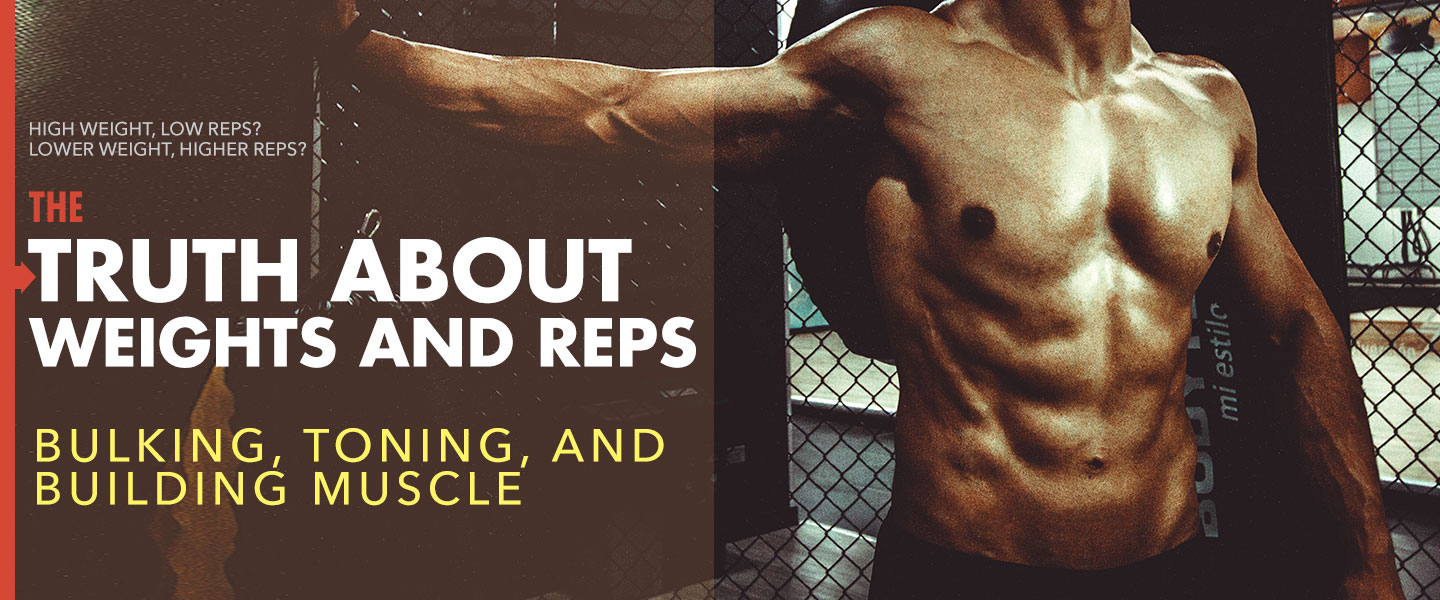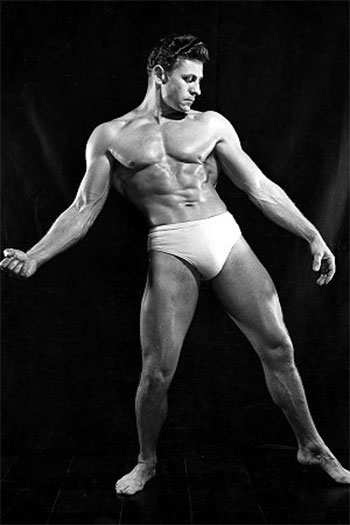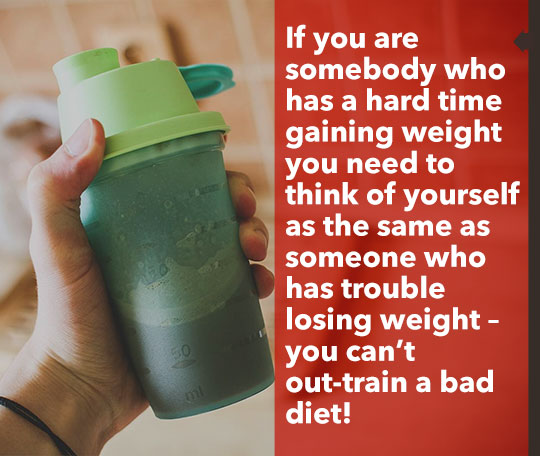Unless it’s just incorrect, most how-to advice will work for someone, but not for everyone. That’s why I think it’s crucial to ask yourself, “Does this advice apply to me?” Here’s who this article is for: The 20-something man looking to improve himself and pack on some muscle. I think this article is more likely to be read by the guys who’ve been disappointed with their results so far, or who just want more. This guy is not an aspiring bodybuilder – that is, he isn’t dreaming of dieting down, oiling up, and flexing in a speedo on stage.
How Big Can You Get?
Getting “swole” is easier than keeping single digit body-fat, but it’s still a lot of hard work, and it also requires a lot more than just lifting weights – even lifting weights in the right rep ranges. Before we get into how muscles grow and proper rep ranges I think it’s important to have a realistic end goal for yourself – how much muscle mass are you looking to put on? And can you actually do that without drugs?
I think that most men have unrealistic expectations of how big they can get because every image you see in a fitness magazine or website has been retouched, and many of the models are using some sort of pharmaceutical enhancement. The good folks at Natural Physiques have put together something called the Fat Free Mass Index (FFMI). I think this is a great place to see how much more muscle you can naturally pack on.
Roland Essmaker won Mr. America in 1939 before steroids became a part of bodybuilding. Through good genetics and a lot of hard work, this is how big he was able to get.
How Long Does it Take?
The first 2-3 months of a solid nutrition and exercise program can seem almost magical, however, after this things slow down.
- First 2-3 months: 10-25lbs of muscle.
- 1st year (after the above first 2-3 mon): 1-2 lbs of muscle per month if you are on point with your lifting, sleep and nutrition. Every time you veer off course you will halt progress and/or lose muscle.
- 2nd year: 1lb per month if you are consistent..
- 3rd year and beyond: under 1lb per month – possibly a lot less.
Rep Range Q & A
Q: What is the proper rep range for getting “toned”? Is it lighter weight and higher reps?
Increasing tone is really about increasing muscular definition, and that comes down to two things (a) losing body-fat (most importantly), and (b) keeping or increasing the amount of muscle you have.
Losing body-fat and maintaining/slightly increasing muscle mass is doable with almost any rep range provided you are consistent, workout often enough, take in enough total protein, and get enough sleep. What is going to be the difference maker in your quest for tone is going to be your diet because you can’t get ripped without a super tight diet. In my opinion, the only guy who should be focused on getting “toned” is somebody with a decent amount of muscle mass who wants that muscle to be more visible – you’re in decent shape, but you want to focus on fat-loss.
Q: I want to lose fat, should I lift heavy? I want to build mass, should I lift heavy?
The short answer to both of these questions is “yes!”. The longer answer is that whatever rep range you are in – 3 to 5, 8 to 12, or 15-20 – you need to lift heavy for that rep range. For example, if you can bench press 200lbs for 5 sets of 5, don’t try to rep 200 for 20, unless you can… if you can then you just wasted your time with your way too easy 5×5 workout.
For the lower rep work, you should only have 1, maybe 2 reps left in the tank on the first set. This means that for your bench press, the load had better be heavy enough that you could only do it 6-7 times if you were training to failure. But only do it for 5 reps because you are going to do 5 sets here. If you are doing 5 x 5 with something you can press 8-10 times, you won't achieve your goals.
Conversely, if you bury yourself on the first set and get 4 reps with a 5th forced rep, then you’re going to exhaust yourself and have a very low quality workout. You’re going to have to drop the weight each set and will end up doing a lot less work (reps x sets x load) that you could’ve if you’d let your brain (vs. your ego) pick the load. Also, the weight needs to allow good looking reps. To use the bench press example again this means you need to be able to fully extend your arms, pause, lower the weight under control until it touches your chest, and then drive it all the way back up. Half reps don’t even get half results, and will punish your joints. (This isn’t often a problem that you’re worried about in your 20’s, but when you roll into your 30’s and 40’s your joints will remember this abuse and they will remind you of it every day.)
The same goes for your medium and high rep work with a few minor changes. Leave a few more reps in the tank for the medium rep work – more like 2-3, and possibly even more for the higher rep work. When it comes to the higher rep work and how many reps to leave in the tank, people will be very different here. For example, I need to leave 5 reps in the tank on a set of 15 if I am going to be able to complete 3 sets. People with more slow twitch fibers won’t need to leave as many reps in the tank.
Work hard and work right (good form, full range of motion, be in control of the load at all times).
Q: Is lower reps/higher weight really better for mass? How do you build mass without getting “bulky”?
Bulk is like “toned” it doesn’t really exist. When people say “bulky” what they’re really referring to is the combination of (a) adding body-fat, and (b) keeping or increasing muscle mass. When you add enough fat on top of static or growing muscles you get a blocky, bulky look. So, like with tone, almost any rep range will help you keep the muscle you have, and beyond that you simply need to eat enough ice cream (that’s my guilty pleasure) in order to get fat.
Sure, there are bodybuilders, who on contest day (when they are super lean) that actually look bulky and blocky, but it’s important to understand that as a drug-free man you can’t gain enough muscle to emulate that look. As a drug-free man, you never have to worry about getting too big. You might need to worry about getting too fat, but that’s a different issue.
Getting Swole
I do think that there is a best rep set up for an experienced lifter. I think an undulating total body strength training program done 3 days a week will deliver the best results. Undulating means that the rep ranges rotate within the week – basically, there is a high rep, low rep and a medium rep day. This allows you to push much harder on any given day, and know that you have a long recovery period before you hit the same movement pattern in the same rep range. This balances the longer recovery period of the rep and movement with the need for frequency.
Strength is the fitness quality that all other qualities are built on. Strength is the foundation. For example, if you want fat-loss you need to be strong enough to make this happen. When people are incredibly weak they are unable to do enough work and/or to physically withstand the stress it takes to get their metabolism burning some serious fat. To grow your muscles you need to be strong enough to lift enough weight in order to do enough total work to simulate growth. The same is true for endurance, when runners get stronger each stride is easier, allowing you to run faster at the same VO2 Max.
Frequency is the most important variable in muscle growth. In bodybuilding the idea that you need to dedicate separate training days to body parts has been popular since the 1950’s and 1960’s. This isn’t a coincidence, in my opinion, because this was the time that drugs became ubiquitous at the high levels of the sport. Drugs change your body’s relationship with training, and I don’t really think that drug-free people can learn much from drug-assisted people because it’s like comparing apples to grapefruits. I do think that you can learn from well-done research on drug-free people, and what we find in the research is that frequency trumps volume.
What this means is that if you are going to do 12 sets of chest work (or horizontal pushing), then you will grow more if you split that up over 3 days with 4 sets per day vs. doing a “chest day” with all 12 sets on that one day. Even for experienced lifters the difference is 50-60% more growth. This is why the workout template below is set up the way it is – work everything every time.
If you don’t have at least 6 months of consistent training under your belt, then I would ask you to start here. Yes, this is a fat-loss program, but if you don’t have at least 6 months of consistent training under your belt you lack the strength, conditioning, and connective tissue integrity to benefit from something more advanced.
If you are an experienced lifter then I would encourage you to do a 3 day per week total body strength training program that looks something like this:
- Each day there are 4 main exercises
- A push – alternate vertical and horizontal
- Vertical would be an overhead press (I prefer kettlebells for overhead pressing most of the time)
- Horizontal would be a push up or bench press variation
- A pull – alternate vertical and horizontal
- Vertical would be some sort of pull up variation
- Horizontal would be some sort of rowing variation
- A knee dominant – alternate bilateral and unilateral
- Bilateral would be some sort of squatting variation (I prefer goblet and double rack KB front squats)
- Unilateral would be a split squat or single squat or forward lunge variation
- A hip dominant – alternate bilateral and unilateral
- Bilateral would be some sort of deadlift or KB swing variation
- Unilateral would be some sort of reverse or side lunge variation, or single leg deadlift variation
- I have videos of many of these on my YouTube channel
- A push – alternate vertical and horizontal
- Rotate the rep ranges from low, to medium to high
- Example:
- Monday – 5 sets of 5 for the low rep work to ensure that you maintain or build strength and work the neurological part of the rep spectrum. (4 sets of 6, and 6 sets of 4 also work)
- Wednesday – 3-4 sets of 10 reps for the medium rep work, which gives you a combination of neurological and metabolic stimulus. (4 sets of 8, and 3 sets of 12 also work)
- Friday – 2-3 sets of 15 reps for the high rep, endurance work because nothing is more fun than doing 15 heavy split squats followed by 15 heavy rows. (Feel free to do 2-3 sets of 20 as well!)
- Example:
- So your workout will take 50-60min.
- The first 10-15 min should be your RAMP UP (like a warm up but a better use of time).
- The next 30 min will be your strength work based on the outline above
- The last 5 min will some sort of metabolic finisher
- If you are someone who has a tendency to get fat (like me!), then I would also suggest that you
- Add in 1 day of high intensity interval training on the days you are not doing strength training.
- Take a look at intermittent fasting. (I’ve written about meal timing and frequency here, here and here.)
Adding Mass for the Hard-gainer
If you are somebody who has a hard time gaining weight you need to think of yourself as the same as someone who has trouble losing weight – you can’t out-train a bad diet! After hard-gainers get on a solid program they also need to ensure that they weigh themselves every week. If the scale isn’t higher than it was last week, then you need to take a look at your diet and add more food. This sounds too simple too work, so people don’t do it, but if you apply this for a month you will never fail to gain for a month again.
Direct arm work may offer no benefit.
Thomas Plummer correctly said, “Time is the enemy of fitness.” Unless you are obsessed and make working out more important than love and work, managing your time in the gym is crucial. One of the most important parts of time management is elimination – what are you currently doing that doesn’t actually get you closer to your goals? I would suggest that bicep curls go on the list of things that probably don’t make any difference.
Research has shown over and over again that if you take two groups of people – trained or untrained, and add single joint exercises (like curls and triceps extensions) on top of multi-joint exercises (like bench presses or pull ups) there is no difference in arm size or strength. This has been done with high level athletes, complete beginners, and guys who were already jacked.
With all of that said, I also know that many people simply enjoy doing arm work. If this is you, there’s no shame, I would simply encourage you to be smart about how you incorporate it. First, it goes at the end of the workout – think of it like dessert, plus you want your energy available for the exercises that will deliver the best results. Second, set a time limit. I like 5 minutes – alternate bi’s and tri’s, and do as many sets as you can.
Getting Gains – A Brief Re-Cap
- Undulate: After you are no-longer a beginner you will probably make the best progress with an undulating periodization scheme.
- Frequency: Working a muscle 3 days a week with less volume works better than a ton of volume on only one day.
- Form: Full range of motion, controlled tempo – shitty reps = shitty workouts = shitty gains.
- Work hard: You need a rep or two in the tank on set 1, but not more than this
- Direct arm work: Probably a waste of time, but feel free to do it after you’ve done what you need to do if it makes you feel good.
- Sleep: Sleep is crucial. All of the important hormones like growth hormone and testosterone depend on enough quality and quantity of sleep. If you’re not getting 7-9 hours of quality sleep per night, then you’re limiting your progress.
- Protein: Shoot for about 1 gram per pound of bodyweight. If you aren't growing then it will be worth it for you to carefully track your intake for a week and see where you are, and then figure out how to close this protein gap.
- Movement quality: We have engineered a world in which people don’t need to move – not even children, as a consequence we move very poorly. When movement quality is low, injury risk is high and strength is also low. I would strongly encourage you to get your Functional Movement Screen score from a certified professional near you. If they do a good job, then they will let you know where your imbalances are and give you a succinct plan for fixing them. I make no money for this endorsement.
- Drugs change things: I don’t think a drug-free trainee can learn much from a drug-assisted trainee. Focus on what works for the drug-free, and remember to base your goals on what drug-free people can do, not on Instagram.
References
Shoenfeld, Brad, et al. (2015). Influence of resistane training frequency on muscular adaptations in well trained men. J. of Strength and Conditioning Research, 29(7) 1821-1829
Arazi, H., & Asadi, A. (2001). Effects of 8 Weeks Equal-Volume Resistance Training with Different Workout Frequency on Maximal Strength, Endurance and Body Composition. Int J Sports Sci Eng, 5(2), 112-118
Gentil P, Soares SR, Pereira MC, Cunha RR, Martorelli SS, Martorelli AS,
Bottaro M. Effect of adding single-joint exercises to a multi-joint exercise resistance-training program on strength and hypertrophy in untrained subjects. Appl Physiol Nutr Metab. 2013 Mar;38(3):341-4.
Rogers, R.A., Newton, R.U., Mcevoy, K.P., Popper, E.M., Doan, B.K., Shim, J.K.,
et al. 2000. The effect of supplemental isolated weight-training exercises on
upper-arm size and upper-body strength. In NSCA Conference. pp. 369
The effects of adding single-joint exercises to a multijoint exercise resistance training program on upper body muscle strength and size in trained men, De Fran.a, Branco, Guedes Junior, Gentil, Steele, and Teixeira, in Applied Physiology, Nutrition, and
Metabolism (2015)


















